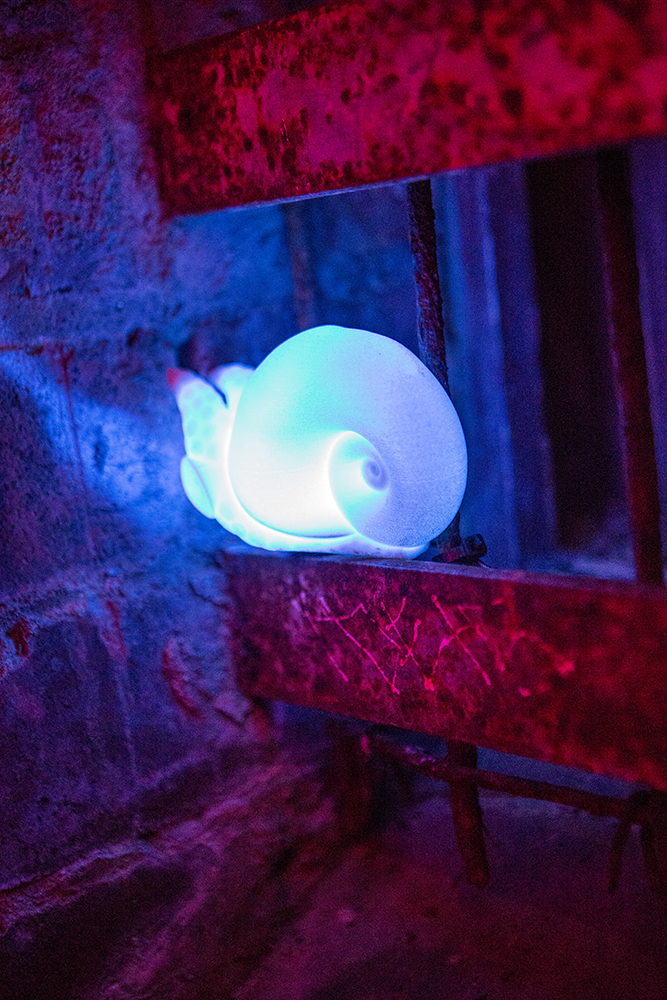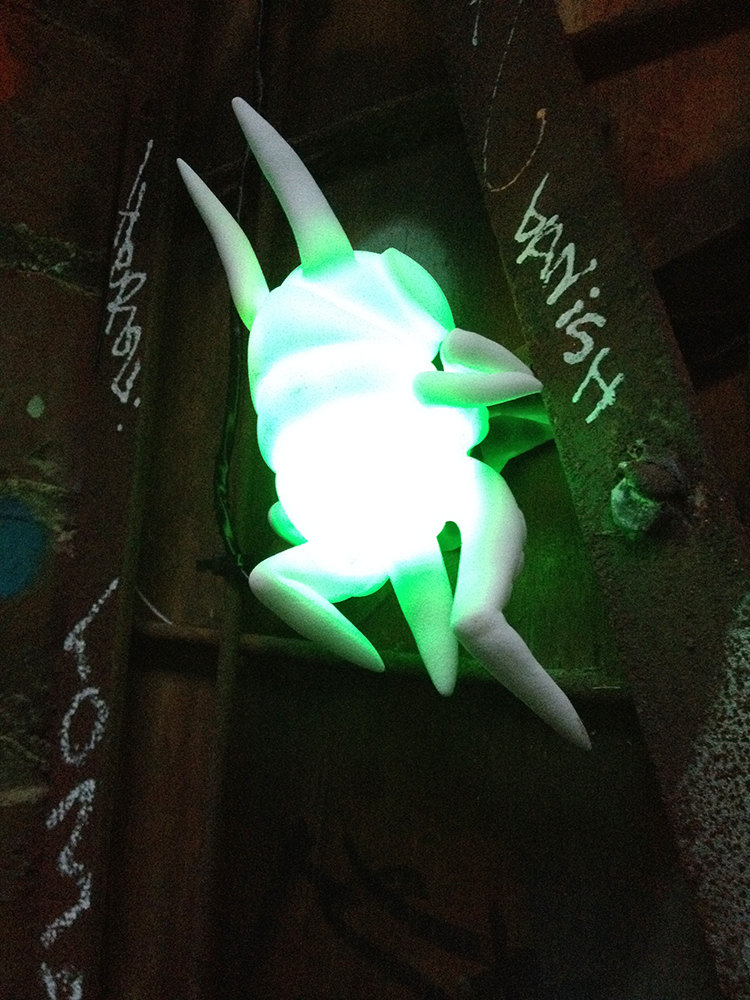The Urban Creature / Lux Light Festival
2015
3D printed resin illuminated sculpture.
Kakapo and Giant Weta, once prevalent throughout the mainland, have habitats now overrun with predators and the trappings of human infrastructure. Powelliphanta lived in storage within fridges when their environment was developed for mining (Smith,2012). These native ecosystems struggle to survive, and even with efforts within predator control and the development of green spaces. not commonly realised, many of these species are not able to coexist with each other due to natural competition for food and territory.
The urban creature installation has a dual purpose. Firstly it locates the native species into an urban context, seeking to juxtapose the natural and fabricated habitat, to create a discussion for the need for spaces to be preserved for indigenous species. Secondly using interactive technologies the installation provides opportunity for the creatures to “speak” to the public, enabling a reactive storytelling experience to occur between the public and native creatures. Using light, sound and movement these creatures provide a tangible reminder of our indigenous species, and questions is out of sight really be out of mind?.
W.J. Sutherland (2002). “Conservation Biology: Science, Sex and the kakapo”. Nature 419 (6904): 265–266.
Wright. M (2012). http://www.stuff.co.nz/environment/5947252/Rare-snails-die-in-storage-mishap
Exhibited at
2015
Wellington Lux Light festival
Wellington, NZ.
http://lux.org.nz/?exhibitor=the-urban-creature













